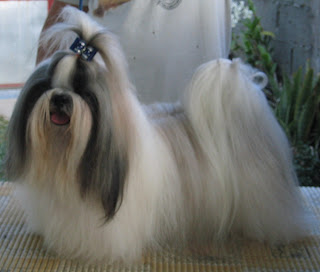Dogs for Sale: Are You Sure That You're Buying a Purebred?
Suppose you are walking past a chain of pet stores that display cute, furry canines on their windows. Your eyes land on this sweet-looking white fur ball. A poodle? But it only has semi curly hair. Ah, a bichon! But the coat is so much longer than a bichon. A maltese, then? Ah, well maybe a terrier of some sort. Finally, you ask the sales clerk and he confirms, "a lhasa apso"! One important aspect of the breed standard among purebred dogs is breed type: the structure and general appearance of the dog should tell you at one glance that what you saw IS a lhasa apso.
Purebred dogs are expected to possess well-defined features, which are typical of their kind; and there should be no doubt in your mind that it is this breed - not half of this breed and half, another.
Different dog breeds have different physical characteristics. Below are descriptions of some of the dogs commonly found around Iloilo.
This site offers an interesting showcase of how the German shepherd's appearance evolved over the years: http://www.asuperiorgsd.com/p2p.html
A few of the popular breeds that are slightly longer than tall in body appearance include the labrador and golden retrievers, Siberian husky, chihuahua, and the great dane.
On the other hand, the dobermann is a medium-sized, square dog. It means that all measurements should equal the height of the dog at withers. The dobermann should remind you of a muscled and tightly fit athlete with an elegant bearing. One of the show judges I've stewarded also explained that dobes are supposed to have wide chests (brisket) because as police dogs, they are used to chase after offenders and jump over high fences. The chest muscles should help these dogs spring themselves with enough power and height. This little piece of information that I got from a foreign judge furthered my understanding with regards the sensibility behind the breed standard -- certain breeds serve important roles in human society. Like the Dobermanns, beagles are also useful to man as trackers, diggers, and chasers. This explains the Beagle's somewhat ragged look.
 |
PHIL GRAND CHAMPION SUNNYSIDE CHEATING HEART "TAKA"
owned by Edward Sinco |
As a general guideline, the following is a list of basic characteristics that every dog owner and lover should look for in a purebred dog:
1. Head
The muzzle length should be approximately 50:50 to skull length. The head should have parallel planes with some stop (that part between the eyes).

2. Neck
The neck should run a smooth silhouette into the withers. Some breeds like the shih tzus have a natural "chin-up" or "head-up", which requires a good proportional length of the neck.

3. Height and Balance
The measurement of withers to elbow should equal that of elbow to ground. A lanky dog is one that measures longer between the elbow to the ground. The brisket (chest) should also either parallel or hang lower than the elbow.
Height is measured from the top of the withers (the area between the shoulder bones) to the ground. Generally, length of body refers to the distance between the shoulders to the rear of the buttocks. Some list of breed standards may specify differently.
4. Legs
The forelegs should be straight and the feet should face forward -- not "toe out".
As a dog lover and owner, it would be good to have a general idea of the different parts of a dog's anatomy. This link should be helpful: http://www.dummies.com/how-to/content/dog-anatomy-from-head-to-tail.html
Okay, so why all this fuss about the breed standard, breed type, whatever? What gives, huh? Well, I have nothing against the mixed breeds; but I have always believed that whenever I want to own let's say, a golden retriever, I don't think that I can call a dog truly a Golden if it is half something else, much less pay the whole price for half the breed! Besides, how can I appreciate a particular breed without seeing its ideal structure and enjoying its temperament and use? Lastly, I feel that mixing breeds and owning "semi" or "false" breeds only contribute to the deterioration of dog breeds and increase of peculiar diseases and disorders. It is unfair for the dogs who are after all truly a joy to man. My heart would simply bleed if I see my canine babies in pain.


